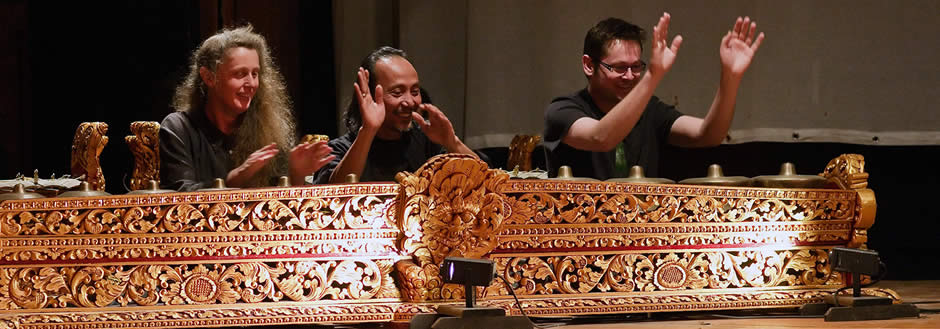Gamelan Taniwha Jaya is a group of New Zealand musicians dedicated to
the study and performance of Balinese music. They specialise in
contemporary music for Gamelan Gong Kebyar, and frequently incorporate
western instruments into the ensemble. They perform on a set of
instruments made by Pak Rantes in Denpasar, Bali, which was bought by
Gareth Farr in 2003.
The name combines a NZ Māori word (Taniwha – a mythical water
monster) with a Balinese word (Jaya – glorious or victorious) to
symbolise the mix of New Zealand and Balinese cultures.
The gamelan is the traditional percussion orchestra of Indonesia, and
Bali’s Gong Kebyar style is characterised by unpredictable rhythms and
wild dynamic contrasts. Entirely comprised of bronze metallophones and
gongs, it has a vibrant and complex sound, and the music shimmers and
pulses with a broad range of sound from tiny high tinkling metallophones
all the way down to massive booming gongs.
Gamelan Taniwha Jaya was launched in August 2003, and since then has
been involved in many projects and performances – including a
collaboration with one of NZ’s most popular acts, Minuit, at WOMAD 2012.
In July 2013, the group toured Indonesia, performing music for
gamelan by NZ composers in several cities – including the Jogjakarta
Gamelan Festival in Java, and in Ubud, Bali.
The ensemble is based at the New Zealand School of Music, Kelburn
campus in Wellington – if you are interested in joining the group,
please email Gareth – details on the contact page.
See the official website of gamelan in Wellington, NZ - http://www.gamelan.org.nz




 His youthful hose, well saved, a world too wide
His youthful hose, well saved, a world too wide
